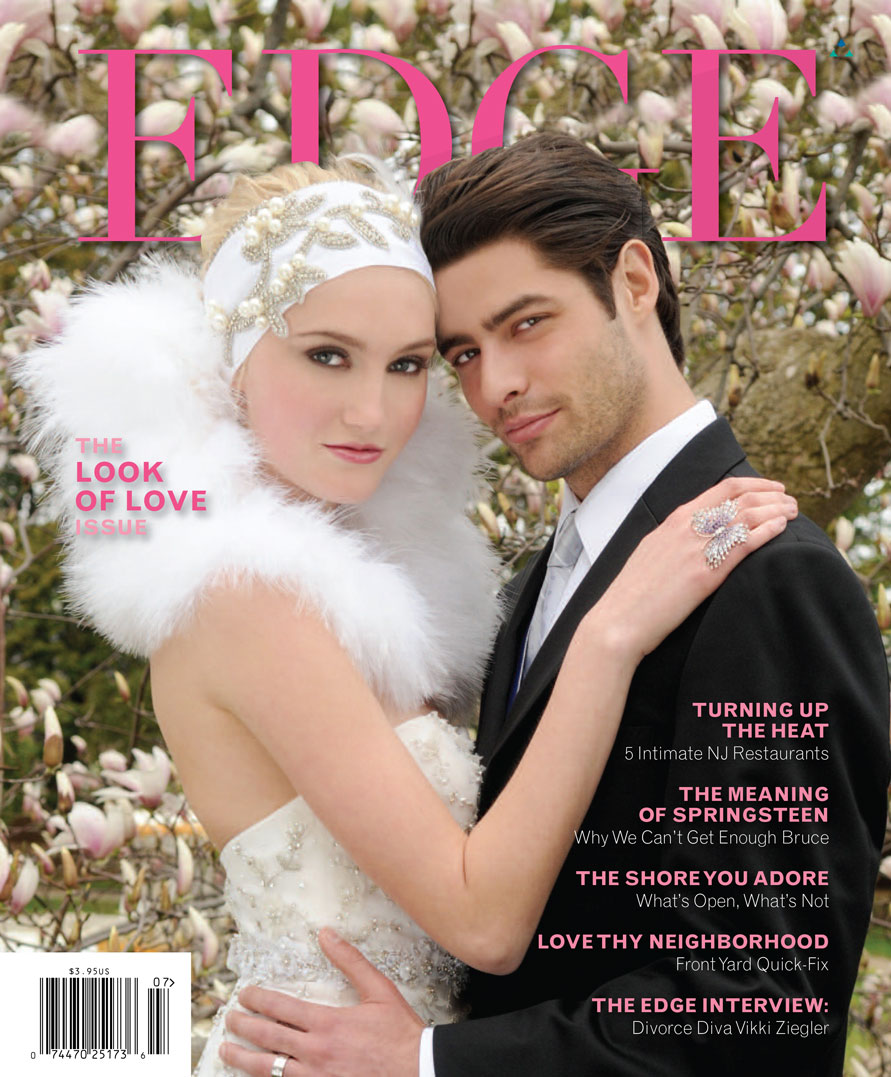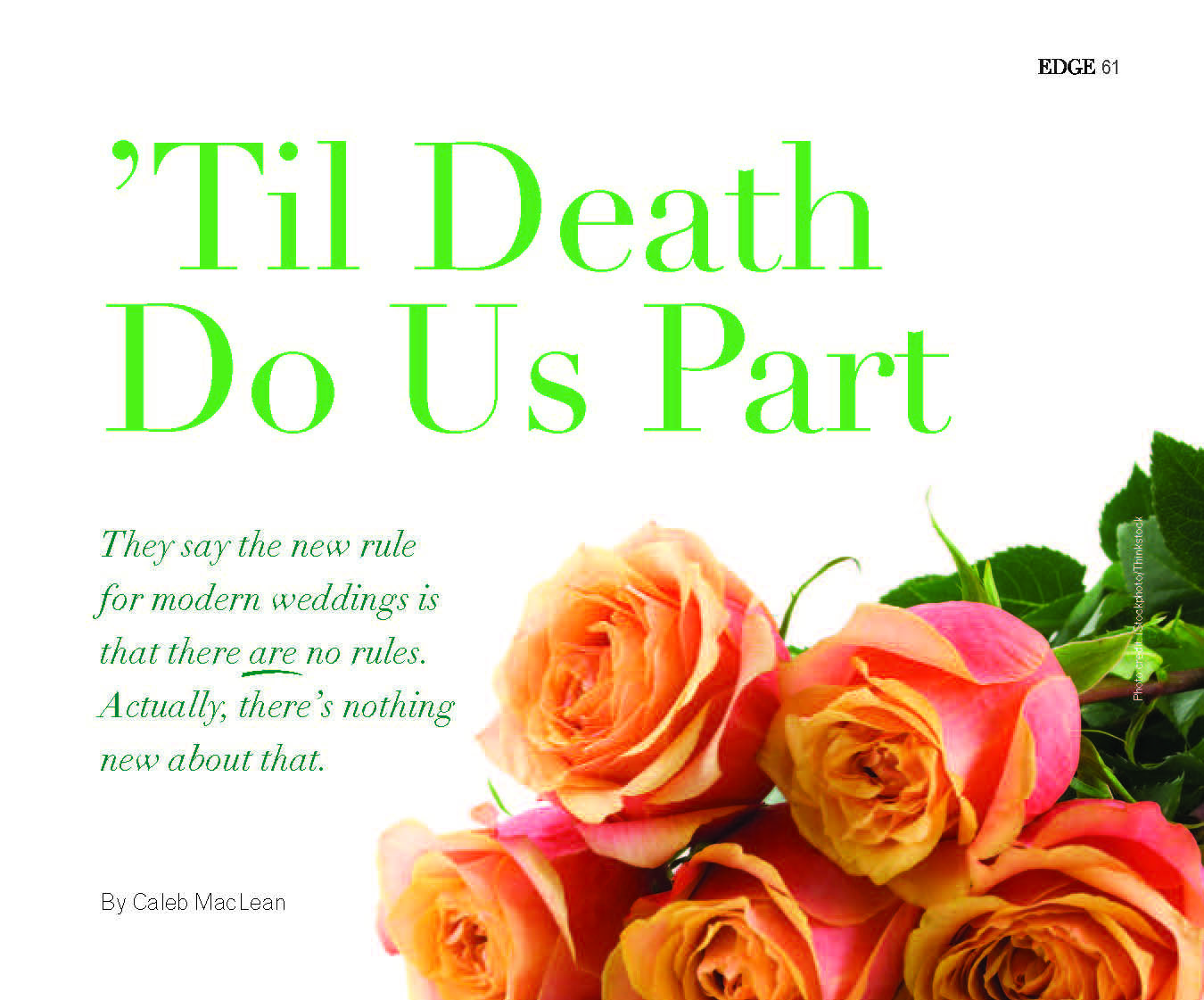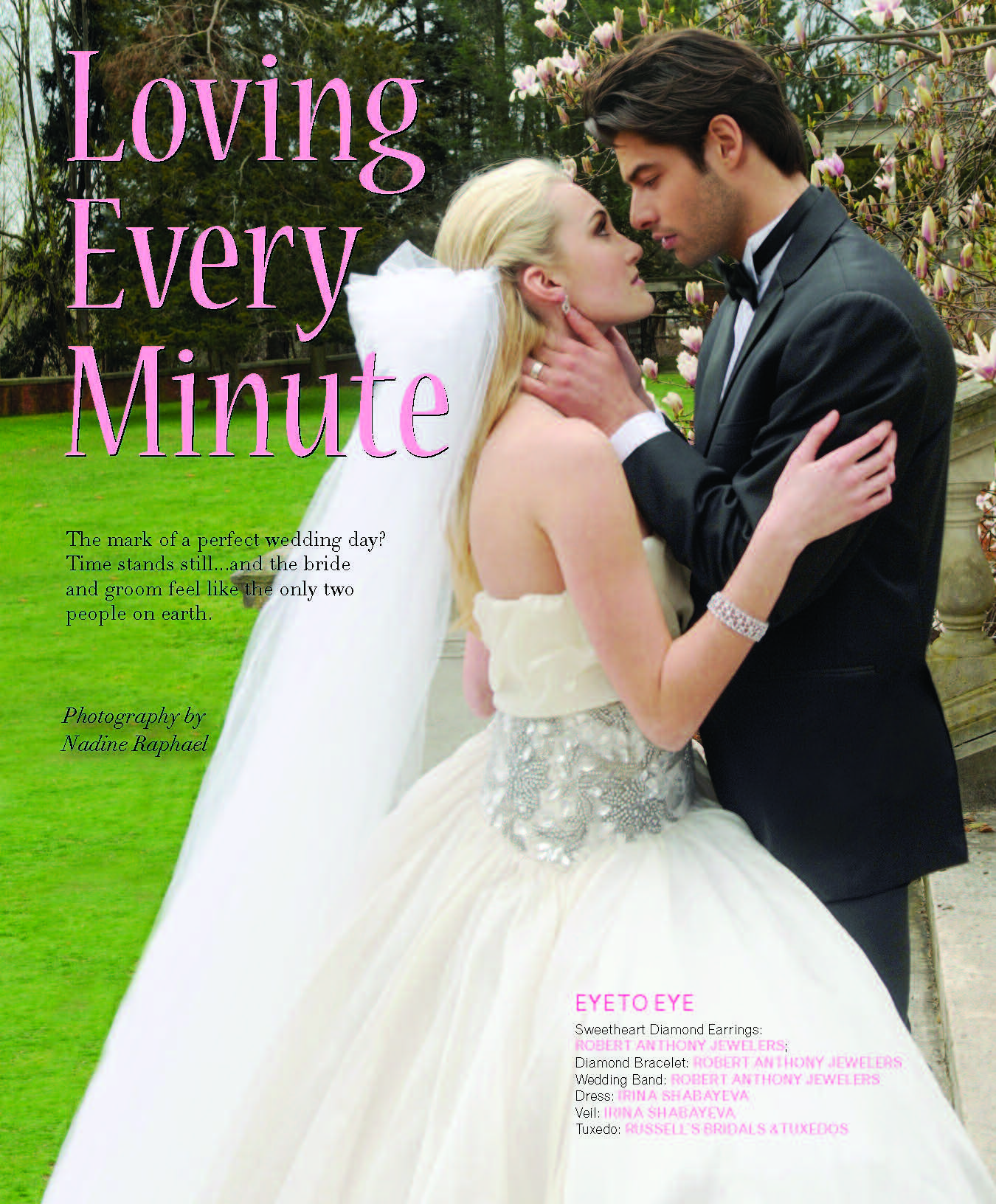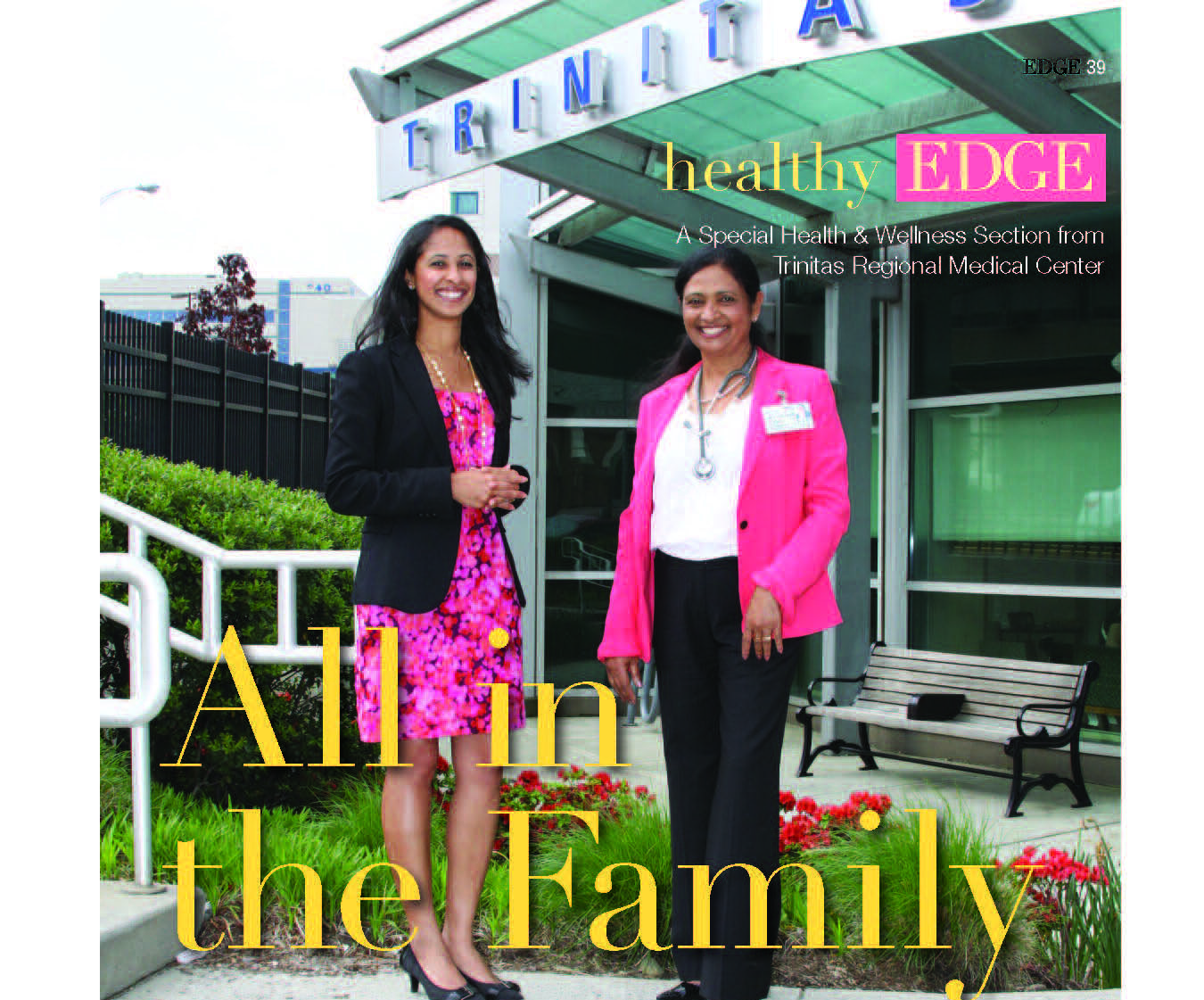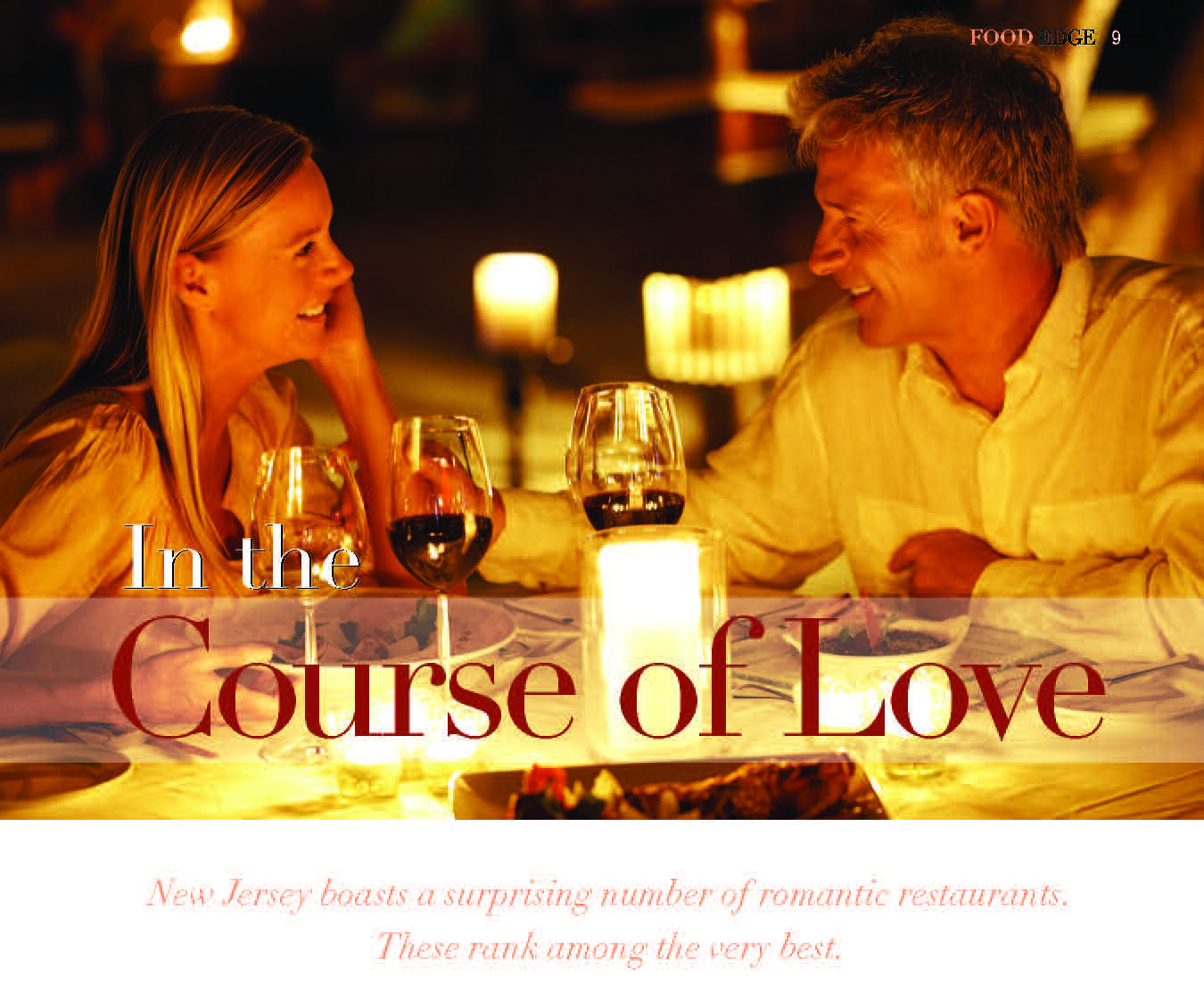It’s the phone call Jersey Shore restaurants love to get… and the one that’s driving them crazy.
Superstorm Sandy did more than just splinter our beloved boardwalks and leave miles of beach towns in devastation and wreckage. It took from us the iconic eateries, watering holes and gathering places where so many Jersey Shore memories were made. The storm surge blew through hundreds of businesses. Some rebuilt, some are still trying, a few just gave up and walked away. Though bruised and battered, the beaches are all open this summer, as are most—but not all—of the beloved beach businesses.
Here is a snapshot (taken in May) of who’s up and running, and whom you might want to check with before penciling them into you shore itinerary. Most were underwater at one point, or perilously close to it. Please note that some of the “Check Firsts” will be open by the time you read this story—so don’t be scared away. Sadly, others may be gone forever…no matter how many times you check.
PLEASANT/PT. PLEASANT BEACH
Martell’s Tiki Bar • Jenks Club • Red’s Lobster Pot • Spike’s • Offshore
SANDY HOOK
OPEN: Sandy Hook State Park
CHECK FIRST: Sea Gulls’ Nest
SEA BRIGHT
OPEN: Woody’s • Harry’s • Ama
CHECK FIRST: Anjelica’s • Donovan’s • McLoone’s
SEASIDE
CHECK FIRST: Seaside Boardwalk Casino Pier
Seaside Funtown Pier
SPRING LAKE
OPEN: Whispers • Black Trumpet • The Breakers
Editors Note: The writer’s family owns Johnny Piancone’s in Long Branch. The water never got near the place, and they were up, running and super-busy within a few days.
Junior year doesn’t have to be a scorcher.
For college-bound high school students (and their parents), getting junior year right promises a lifetime of rewards. Messing it up can lead to frustration, acrimony and an endless string of woulda’s, coulda’s, shoulda’s and what-if’s. Which makes you wonder: Why is it that most college counselors don’t have a formal sit-down with kids until March or April of their junior year? That puts families in the unenviable position of learning the process while doing the process.
That’s the educational equivalent of diffusing a bomb while reading the manufacturer’s instruction manual for the first time.
In the spirit of summer, I would encourage young people and their families making the transition from sophomore to junior year to start embracing SPF. No, not the sun protection SPF—Student Proactive Factor. It’s a six-step process for juniors that should start right about now, but for younger students it can definitely begin earlier..
It’ll be a day at the beach if your rising junior…
- Improves overall GPA by two clicks.
It’s now or never. Colleges look for an “up” trend and as a parent you can help by encouraging your child to draft a mission statement for junior year. Every academic, social and extracurricular decision from that point forward should be weighed against this goal. Keeping their eyes on the prize will reduce the chance of derailment.
- Begins connecting with admissions representatives at top-choice colleges.
Pick the schools you like and get on their radar. Parents can assist by transporting their child to at least one college fair and then taking a back seat. Shadow your child but refrain from speaking at all. This often-excruciating exercise sends the clear message that it is the student’s process, not the parents’.
 Makes something better at school or in the community.
Makes something better at school or in the community.
Colleges aren’t looking for applicants who try to reinvent the wheel; just make a better mousetrap. Prompt your child to identify two or three aspects that they like about their school setting and two or three opportunities for positive change outside school. Then, the student is encouraged to choose area of need and respond to it with the leadership of love.
Campus Visits
If your kid’s begun Driver’s Ed before you’ve visited a college campus, then slow down and back up!Somehow, everything accelerates when students become independently mobile. Go online, buy a college guide, ask around—just pick schools that seem to represent the light at the end of the tunnel and make a day trip or two. You’ll be hearing a lot of pitches from admissions officers over the next 12 to 15 months, and each will make his or her school sound great. Learn to listen between the lines, and get comfortable walking around college campuses. Strength: Zinc Oxide
Student Buy-In
When you have skin in the game, there is more personal accountability. Tell your child what college costs, and how much debt you are likely to incur during the course of their education. Even if you are a “full-pay” family, consider saddling your child with a small student loan. This may help focus your daughter or son on getting serious about the process now. Besides, there’s no time like the present to start providing kids with life lessons about their future of financial autonomy. Strength: SPF 10
Get Acquainted and Organized
Explore and understand fully the processes in place at your school. Remember that, regardless of whether you work with an outside educational consultant, collaborating with your school-based guidance counselor is vitally important. Ask about how to request transcripts, how much lead time is necessary, the protocol for teacher recommendations, etc. While you’re at it, remember that, in this process, the squeaky wheel almost always gets the grease. So try to get a read on how much squeaking you’ll need to do to get the grease you desire in the year ahead. Strength: SPF 15
Your kid will look like a lobster if he or she…
- Self-sabotages.
Be vigilant regarding behavior that may look like typical teen-aged “ball-dropping” but can actually be deliberate self-sabotage. It’s a self-fulfilling prophecy stemming from students’ internalization that they are not worthy of enjoying success. Drawing on the personality development research of Stanford professor Dr. Carol Dweck, parents can make enormous strides by taking praise of intelligence out of their vocabulary and instead, praising their children for their diligent work ethic. This will encourage students to feel worthy of achievement and simultaneously less afraid of vulnerability, risk-taking and comfort-zone transcending in the learning arena.
 Tries to outsmart the teachers.
Tries to outsmart the teachers.
Teens, especially those of a precocious nature, may believe that they are in no need of growing the bonds of the teacher-student relationship. However, it is precisely that seeking-out of a mentor—and the act of asking for advice and extra help—that can enlist a champion of a student’s admission cause. Encourage the growth and healthy development of advisor relationships. Reinforce to your teen that it takes a village. Or remind them of the Wonder Pets!wisdom: What’s gonna work? Teamwork!
- Fails to understand cause and effect.
High school students do not have fully developed frontal lobes of their brains. Period. This process of development helps us link choices with natural consequences, i.e., “If I run this red light, likely it will only affect me, but nothing is going to happen anyway.” As a result of this perspective, adolescents can make short-term decisions that may result in troublesome long-term consequences. Add any illegal substance, and the effects are exponentially skewed. As a parent, you need to send a strong and consistent message of a zero-tolerance policy for drugs, alcohol and internet pornography. The effects on the developing brain have been amply documented. Be prepared to provide your young adults with fac
ts and stats. This is an information generation and good data trumps cautionary tales.
Don’t End Summers Empty-Handed

Encourage your child to be productive, be adventurous, be courageous, grow a passion, plan for consistency of theme in involvements, explore career paths and possible topics for academic majors and undergraduate programs through shadowing, internships, work or study and academic research. Strength: SPF 20
Reverse-Engineer Your Application
As hindsight is 20/20, backwards-plan as much as possible. Your child might ask questions such as: What level of math or language do I desire to be taking by senior year? What clubs will provide opportunities to take on meaningful leadership by the second half of my high school career? Who will be willing to champion me in my recommendation letters? What story do I want to be able to tell colleges about myself, and how I have stewarded my talents? Strength: SPF 30
GPA and Course Selection: Quality vs. Quantity
When evaluating grade point average, colleges look at whether students have taken on the most challenging courses at their schools. So get involved and be deliberate when picking courses. Be sensitized to strengths and areas of developing expertise, defer to challenge and rigor in almost every case. Also, inquire about teachers’ legacies at the school—who goes the extra mile and who’s phoning it in? Begin to grow strong adult mentor relationships and become the most interesting you possible. Remember, its’ more about skill-set acquisition and exposure than volume. Strength: SPF 50 EDGE
Editors Note: Erin Avery runs Avery Educational Resources, an independent educational consulting practice. The company holds a popular College Application Boot Camp (August 6-9 on the Jersey Shore), where rising seniors complete their common application, personal statement and activity essay before senior year and fall athletic seasons begin. For families with summer homes in the Metro area, the company also offers Bespoke Boot Camp on-location. For more info, log onto averyeducation.com.
They say the new rule for modern weddings is that there are no rules. Actually, there’s nothing new about that.
Am I imagining things, or does this wedding planner stink?
In Medieval Europe, June weddings became popular because people took their annual baths in May. The tradition of a bridal bouquet began at weddings held after June, when the happy couple and their guests tended to be a bit more fragrant.
I am so ready to start dating again…
Daniel Bakeman and Susan Brewer were just teenagers when they got hitched in New York in 1772. Susan passed away before Daniel, in 1863, making their marriage the longest in modern history at 91 years.
Oh, right. And Rip Taylor is “just a bit flamboyant”….
In 2007, a man named Liu Ye in the Chinese city of Zhuhai got fed up with being single. Unable to find a suitable mate, he married a foam-core cutout of himself. Over 100 guests attended the traditional ceremony, which included a best man and bridesmaid. Ye admitted that he might be “just a bit narcissistic.”
 Wait. Didn’t I see this on a reality show?
Wait. Didn’t I see this on a reality show?
When the legendary lover Casanova decided to settle down, the mother of the young woman to whom he proposed reminded him that they had once been lovers—and informed him that he was proposing to his own daughter.
 No way we’re tipping the band…
No way we’re tipping the band…
Elton John once charged £2 million to sing at a wedding.
Today, we just use Slim Jims…
In Ancient Rome, marriage experts studied the entrails of swine in order to determine the luckiest day to hold a wedding.
And your point is…?
In a 1976 mass wedding held in Yankee Stadium—during which more than 20,000 members of the Unification Church tied the knot—Reverend Sun Myung Moon announced that the world had lost faith in America, and that New York had become “a jungle of immorality and depravity.”
 Does that mean there are more than 25,000 wedding singers?
Does that mean there are more than 25,000 wedding singers?
In the People’s Republic of China, more than 25,000 marriages ceremonies are performed on an average day.
Any truth to the rumor she’s seeing the Tilt-A-Whirl on the side?
In 2009, a 23-year-old woman named Amy Wolfe married a roller coaster in Pennsylvania. She had fallen in love with 1001 Nachts at Knoebels Amusement Park as a teenager and claimed to have developed a relationship with “him.” After the ceremony, Amy changed her last name to Weber, after the ride‘s manufacturer.
 And the line at the carving station was ridiculous…
And the line at the carving station was ridiculous…
In 1867, the wedding of Maria del Pozzo to Prince Amedeo of Italy got off to a rocky start when it was discovered that Maria’s wardrobe mistress had hung herself and the palace gatekeeper had also committed suicide. Things could only get better from there, right? Wrong. It was a blistering hot day, causing the elaborately garbed leader of the wedding procession to collapse and die from heatstroke. After the happy couple boarded their honeymoon train, the stationmaster fell onto the tracks and was crushed under the train’s wheels. The carnage continued as an aide to the king fell off his horse and broke his neck during the revelry, and Amedeo’s best man accidentally shot himself.

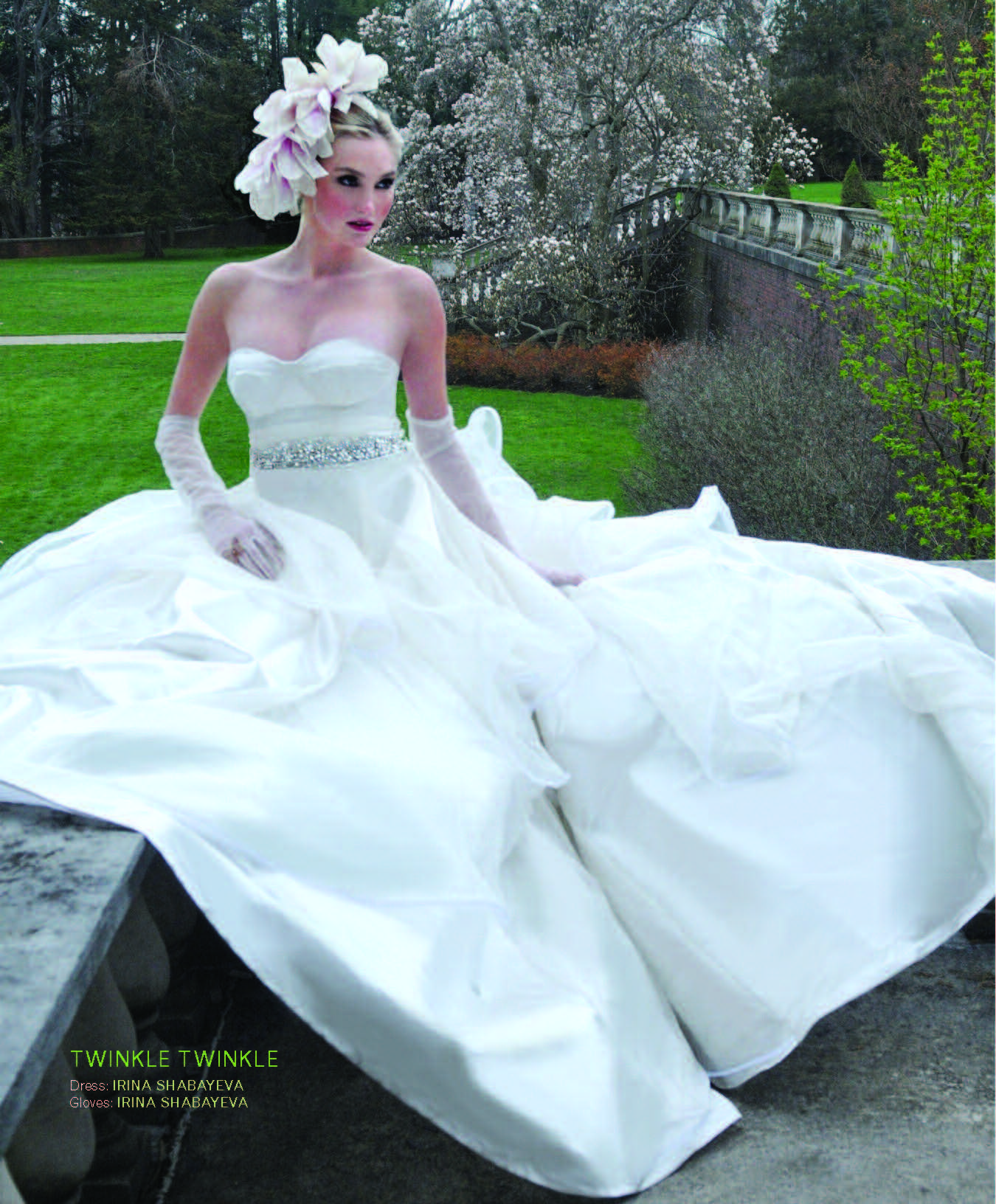
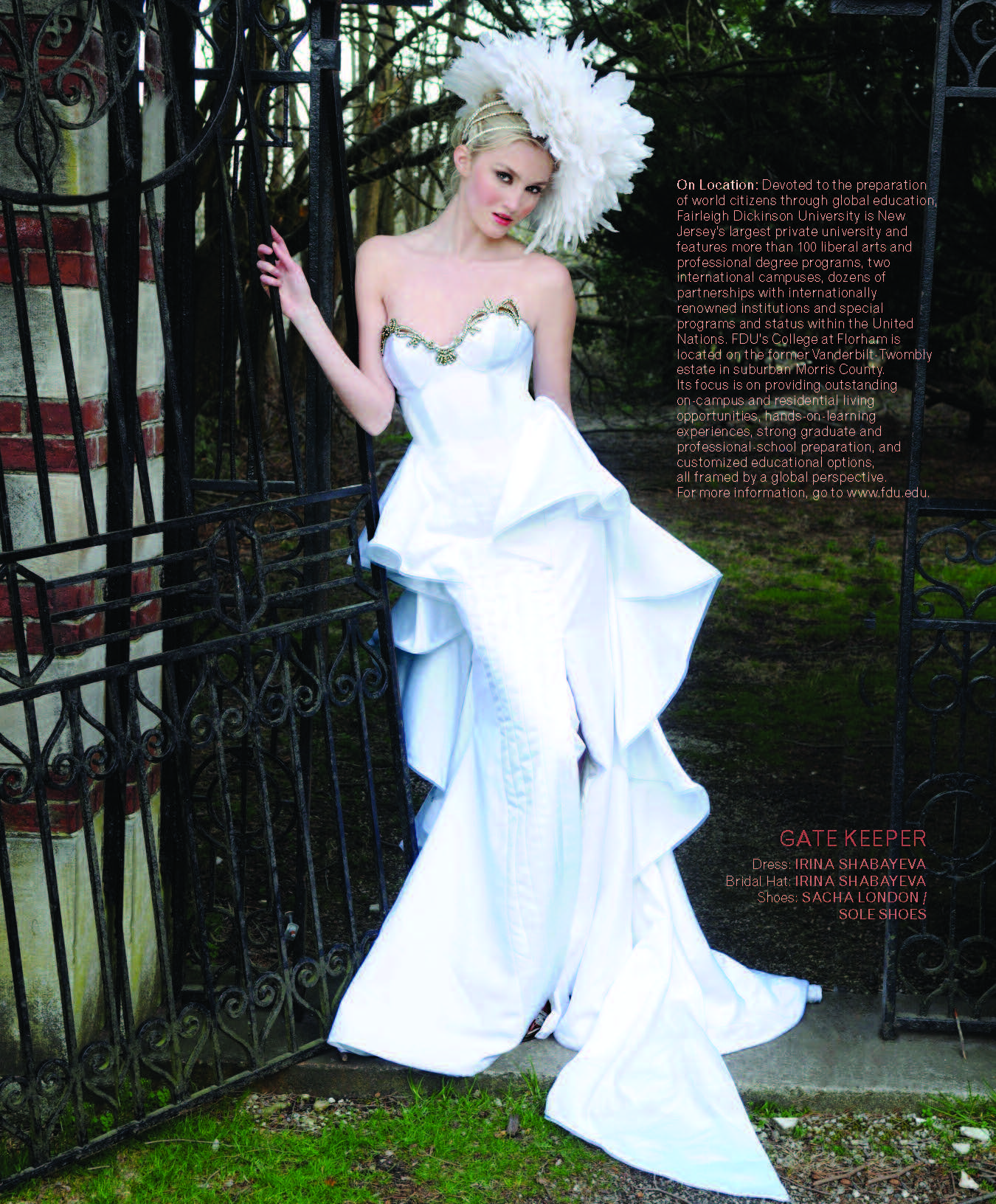


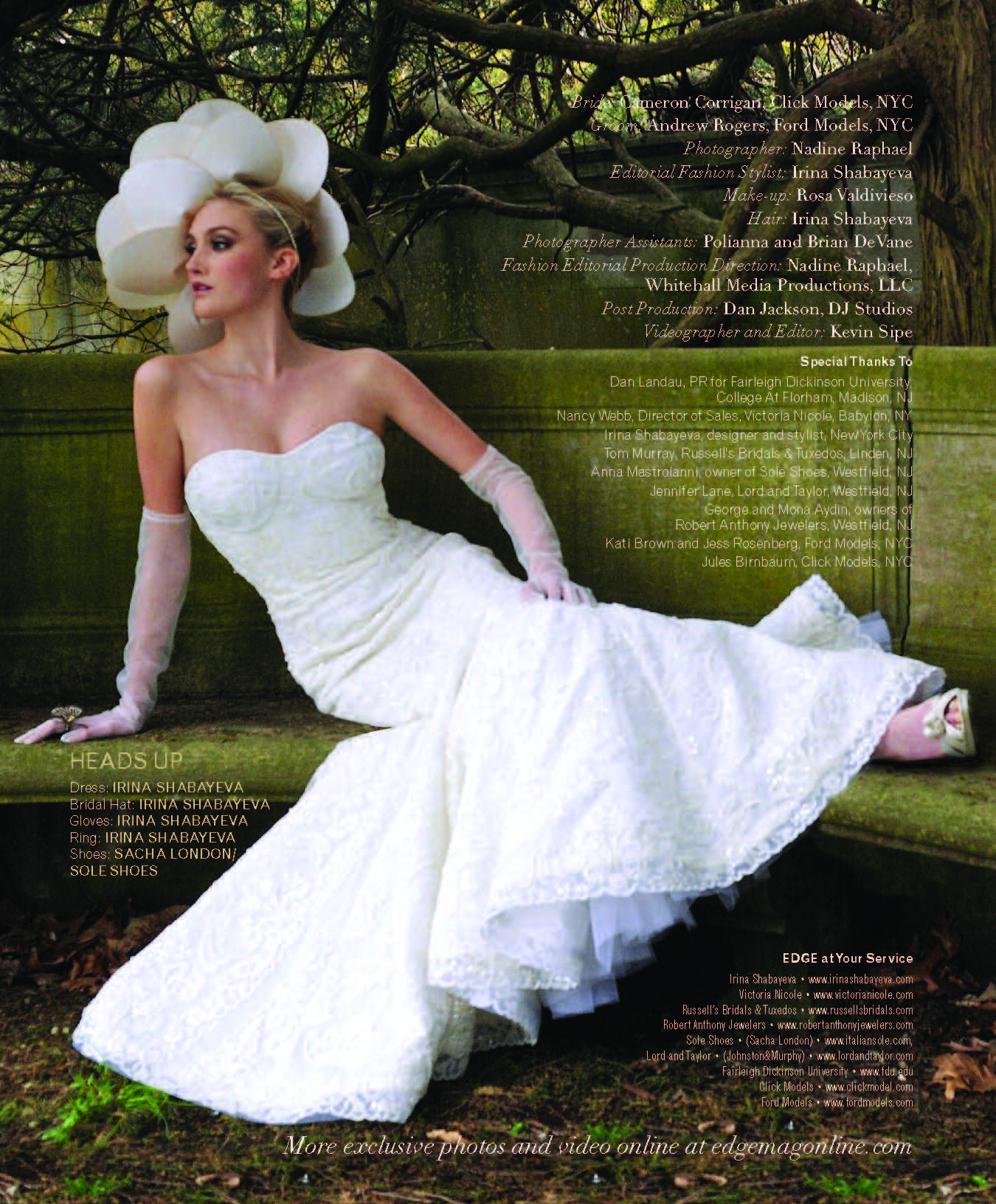
News, views and insights on maintaining a healthy edge.
 Coughing Up More for Cigarettes
Coughing Up More for Cigarettes
Getting adults to quit smoking sometimes seems like an uphill battle. But keeping kids from starting is a little easier. Study after study—many dozens, in fact—agree that the more cigarettes cost, the less likely young people are to start smoking. That is one of the main reasons the Centers for Disease Control is backing President Obama’s recent proposal to raise the federal tobacco tax by almost 100%. CDC Director Tom Frieden estimates that this alone would result in 230,000 fewer people taking up the habit as teens. An additional benefit would be a reduction in heavy smokers. A 2012 study by Tobacco Control magazine found that people who smoke two packs a day were very likely to cut back with a steep rise in prices.
 60 is the New…75?
60 is the New…75?
We may be living longer than our ancestors, but are we healthier? A new study in the Netherlands suggests we are not. Researchers looked at the prevalence of risk factors for stroke, heart disease and diabetes—including obesity and high blood pressure—and found that today’s adults are “15 years older” than their parents and grandparents at the same stage of life. The reason we live longer is probably because fewer of us smoke, and treatments for common diseases are better. The study, published in the European Journal of Preventive Cardiology, followed 15,000 adults between 20 and 59 for a period of 16 years.
 Breaking Up is Hard to Do
Breaking Up is Hard to Do
Who takes it harder when a relationship goes south? A study by Wake Forest University claims that young men do. Despite being portrayed as aloof and insensitive in romantic relationships, they appear to be more emotionally involved than their female counterparts. Researchers found that young women derived a greater benefit from being part of a couple. However, their male counterparts were more likely than women to be harmed emotionally when a relationship hit the rocks. “This finding makes a lot of sense and is extremely logical,” says Dr. Rodger Goddard, Director of Wellness Management Services at Trinitas. “Women are socialized to share and express their emotions and stress with others. When men get together, however, young and old, they tend to talk about sports, politics and other things that are external to them. They often save their emotions and intimacy for their love relationships. It therefore makes sense that, when they lose the person they love, they are more devastated emotionally than women are…because now they are without an outlet for their emotional side.”
 The One Percent Solution
The One Percent Solution
Every week it seems we hear about another initiative to get teens to eat healthier. And yet our eyes tell us that teens are eating more junk than ever. Well, our eyes don’t lie. The University of Oklahoma’s School of Public Health just released data from a five-year study that shows 4 in 5 teens are eating their way toward heart disease. Even worse, only 1 in 100 teens is eating an “ideal” diet from a heart-health perspective. The American Heart Association, which published the report, characterized the numbers as unacceptably high and called for broad social and cultural changes as the only way to avoid a national catastrophe by the time today’s teens reach middle age. “The apple doesn’t fall far from the tree,” observes

Kevin Lukenda, DO Chairman, Family Medicine
Kevin Lukenda, DO, Chairman of the Family Medicine Department at Trinitas. “Parents need to show their teens and ’tweens how to eat healthy, by example. Also, fewer video games and more outside activity will keep the heart healthy.”
 Bipolar Breakthrough
Bipolar Breakthrough
In the last issue of EDGE, Chris Gibbs wrote about the advances in medicine triggered by the Human Genome Project. One of the newest advances may benefit people suffering from bipolar disorder. Researchers at University in College in London found that a small percentage of these patients had a mutation in a brain receptor gene that put them at greater risk for bipolar disorder. The findings, published in JAMA Psychology, suggest that these individuals can be effectively treated with existing drugs that are not currently used for bipolar disorder. Indeed, two drugs trialed for anxiety disorder and schizophrenia should be effective on 1.7% of bipolar patients. It’s not a huge number, of course, but to that 1.7% it could mean the world. While genetic research holds tremendous promise,

Anwar Y. Ghali, MD Chairman, Psychiatry
Dr. Anwar Y. Ghali, Chairman of Psychiatry at Trinitas, cautions that the medications approved by the FDA—including mood stabilizers and second-generation anti-psychotics—are still the most effective means of treating bipolar disorder. “In addition,” he says, “psychotherapy is indicated for better adjustment and coping with the disease, as well helping to reduce future relapses.”
As a rule, and often out of necessity, interventional cardiologists are as cool and detached as they come. Fayez Shamoon is the exception that proves the rule.
By Jennifer L. Nelson
How frail the human heart must be. When Sylvia Plath penned those words she could hardly have anticipated the work of Dr. Fayez Shamoon, the newly appointed Medical Director of Cardiovascular Services at Trinitas Regional Medical Center. Whether performing a heart-valve replacement procedure, or springing into action to save a patient’s life after suffering a heart attack, Dr. Shamoon blends world-class technical skill in interventional cardiology with a level of personal involvement which, for decades, has set him apart from his peers.
“Cardiology is a fascinating, procedure-oriented field,” he says, “but it’s the time I spend with patients that I find most rewarding. Once you do something for them, you can just tell how much they appreciate it.”
Learning Curve
Although he keeps himself busy consulting with patients and providing life-saving cardiac procedures, Dr. Shamoon remains committed to the pursuit of education. Along with co-authoring some 50 peer-reviewed articles, he actively participates in clinical trials and studies to do his part to advance the field of cardiac care. He is currently the Program Director of the General Cardiology Fellowship and Interventional Fellowship programs at Seton Hall University’s School of Health and Medical Science. Since graduating from medical school, he has shared his knowledge at a range of academic institutions in various capacities. “One of the most enjoyable parts of what I do is interacting with residents and fellows,” he says. “I’m a teacher by nature, and never believed I belonged in private practice.”
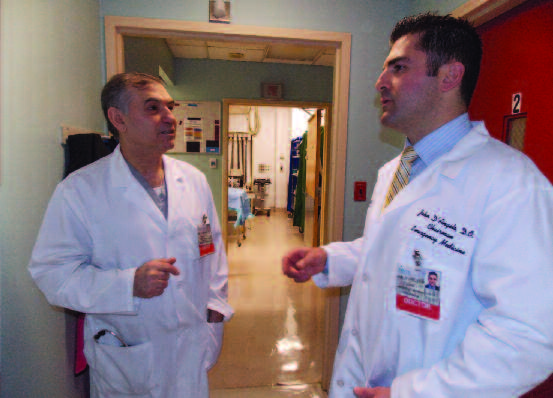
Dr. Fayez Shamoon, Director of Cardiovascular Services (left) confers with Dr. John D’Angelo, Chairman of the Department of Emergency Medicine, about the life-saving potential of field as-sessments of patients suffering heart attacks caused by blocked arteries, known as STEMI.
That’s the easy part of the job, Dr. Shamoon insists. In an environment where technology and procedure are ever-changing, he must remain laser-focused on the latest surgical practices and treatments. “Cardiology is such a progressive, high-tech field…and there are so many advances in the pipeline,” he says. “It’s very exciting.”
Among Dr. Shamoon’s proudest moments as a cardiologist are when he succeeds in keeping a patient out of the operating room; his expertise in the latest cardiac procedures can often spare patients from traditional open-heart surgery. While on-site at Trinitas, he can almost always be found in the Cardiac Catheterization Lab. When a patient is suffering from a heart attack, Dr. Shamoon is among the first on call. Every minute counts (with 90 minutes of arrival being the industry-accepted maximum), and the team at Trinitas routinely cuts 15 to 20 minutes off its “door-to-balloon” time — significantly improving the success rate of a life-saving angioplasty procedure. Trinitas remains one of the only medical centers in New Jersey to provide a direct line to cardiac care by allowing patients experiencing an ST segment elevation myocardial infarction (STEMI)—in layman’s terms a heart attack caused by a blocked coronary artery—to bypass the emergency room and head straight for the cardiac unit. “This is really my major work,” Dr. Shamoon explains.

Janice Learn, RN, Director of the Cardiac Catheterization Labora-tory, works closely with Dr. Shamoon in caring for patients who undergo elective and emergency cardiac procedures at Trinitas.
Dr. Shamoon also makes himself available to perform an array of clinical procedures—including aortic valve replacements where patients may need him in other institutions in Northern New Jersey. One of his specialties is a cutting-edge technique that allows surgeons to replace a heart valve through a catheter inserted into a small incision in a patient’s groin, ultimately sparing them from open-heart surgery. “They wake up the next day and it’s like nothing ever happened,” he smiles.
Dr. Shamoon received his medical degree and training overseas at the University of Jordan and Jordan University Hospital. He spent years as an ER physician at hospitals in Northern New Jersey and then established a private practice in North Arlington in the late 1990s. But, the cardiologist has always felt the tug of the community. Now in Elizabeth, he has planted himself firmly in the realm of hospital care, where his breadth of experience can benefit the widest possible audience.
“Trinitas is truly a community hospital, and I pride myself on being able to provide a real service for the region,” he says. “When patients need me, I can offer my skills to them right where they live.”
Editor’s Note: You can contact Dr. Shamoon in his office at (908) 994-5333.
Mother-daughter relationships are as complex as they come. At least, they’re supposed to be.
Following in the footsteps of a parent can be a perilous journey. Expectations are high, comparisons are many, and the challenge to measure up to that legacy can result in an enduring personal struggle. Not so for Dr. Michelle Cholankeril, whose choice to follow her mother, Mary, into oncology not only proved to be the simple one, but the right one, too.
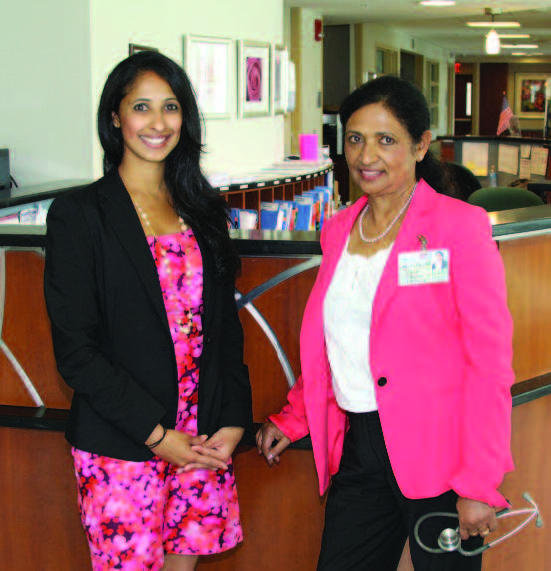 “All of my life, I have watched my family do charitable work,” she explains. “My grandfather was a physician, my mother was a physician, and through them doing their jobs, I felt like this was a career I wanted to pursue—where I could actually go out into the community to help people and gain personal satisfaction from contributing to medical society.”
“All of my life, I have watched my family do charitable work,” she explains. “My grandfather was a physician, my mother was a physician, and through them doing their jobs, I felt like this was a career I wanted to pursue—where I could actually go out into the community to help people and gain personal satisfaction from contributing to medical society.”
Dr. Cholankeril practices hematology and medical oncology at the Trinitas Comprehensive Cancer Center. She is the one beaming as she walks through the doors of her hospital each day, ready to take on any and all challenges. And those conversations with her mother—as both a colleague and a daughter gathering insight?That’s a wonderful bonus.
Trinitas Regional Medical Center is something of a second home to Dr. Cholankeril. She has been working at the hospital since high school. She started as a volunteer behind the entrance desk in the main lobby, worked in the ICU as a medical student, and continued to maintain a family connection to Trinitas in the years that followed. In 2013, her career came full circle, as it were, when she joined the Trinitas staff as an M.D.
Working in hematology and oncology has a particular appeal to Dr. Cholankeril. “These are the most grateful patients, in a sense, because not only do they value their life, but they also understand the value of the diagnoses they have,” she says. “It’s really great to be involved in a field where you can witness a cure in some of your own patients. It’s quite fulfilling to be a part of something so extraordinary.”
Needless to say, Dr. Cholankeril is a student of her specialty as well as a practitioner. She helps submit abstracts to the American Association for Cancer Research (AACR) and the American Society of Clinical Oncology (ASCO). She is currently a part of clinical trials run by Trinitas, and also does work with the Jefferson Kimmel Cancer Center in Philadelphia to further expand clinical trials. The progress she has witnessed firsthand in her field convinces her that cancer will ultimately be defeated through advancements that have been made in just the last few years.
“A lot of what we know about cancer today is based on the research we obtained from yesterday,” she says. “If you are involved in research today, then you are able to be a part of the future of oncology. So far it has been a great learning experience.”
Dr. Cholankeril’s career path might have been paved by doctors in the generations before her, but at the end of the day she leaves footprints of her own, building on the wisdom of her mother and grandfather. As she treks through the daily challenges and triumphs, however, she is keenly aware that the apple hasn’t fallen all that far from the tree. And she’s okay with that.
“My mother always said to pursue what my calling is, whatever that may be,” she points out. “She never suggested one thing or another. I suppose she thought I was responsible enough to make my own decisions, so she told me to follow a career path that makes me happy. And that’s what I ended up doing.” EDGE
Editor’s Note: You can contact Dr. Cholankeril in her Trinitas office at (908) 994-8771.
When it comes to serious yard work, it’s what’s out front that counts.
In Chinese, the word “crisis” consists of two characters. One represents danger, the other opportunity. This sums up rather neatly the state of suburban lawns in post-Sandy New Jersey. Hopefully, by now you have taken care of the downed wires and looming limbs and are focusing on the opportunity to re-imagine your front lawn.
Every plot of land presents its own challenges, of course, but there are some cosmetic rules-of-thumb that can make your property more appealing. We checked in with four Garden State landscaping experts, gave them a suburban home with a sidewalk in front, and asked them for their tips and tricks to undo what Sandy did and punch up the curb appeal.

Photo credit: iStockphoto/Thinkstock
Dave Williams
Williams Nursery • Westfield
If you’ve lost trees during Sandy, there is a silver lining: you have gained more sun. So now you can plant shrubs with more summer blooms that would have suffered in the trees’ shade. Over the past few years, shrubs with multiple blooming times have come on the market.
Take hydrangeas—they used to have a shorter blooming time and if there was a cold winter, you might not get a good bloom that year. A few years ago, we were thrilled when “Endless Summer” hydrangeas arrived. Now we have additional varieties that continually bloom, such as “Forever & Ever” hydrangeas. Along with the traditional blues, “Forever & Ever” offers wonderful color choices, ranging from “Pistachio’s” pink with green edge and “White-out” to “Peppermint’s” white with pink brushstroke and “Fantasia’s” lime green and pink flowers that fade to blush pink with apricot/mauve hues. An added benefit to “Endless Summer” and “Forever & Ever” is that they are less daunting: hearty, easier and not as affected by weather. You don’t even have to worry about when to prune. If you plant these hydrangeas, you can cut the blooms for your home and have wonderful color inside and out.
Repeat-blooming plants are also an option. Lilac “Bloomerang” has spring and fall flowers and azalea “Encore” and “Bloom-a-thon” bloom in April/May and again in September/October.
 If you miss impatiens—not on the market due to Downy Mildew—a great substitute with a similar color palette is caladium. While not a flowering plant, caladium has heart-shaped leaves in a variety of colors—white, red and pink. Caladium can tolerate the growing challenges of summer months. You can plant it in a dry site in the shade and forget about it.
If you miss impatiens—not on the market due to Downy Mildew—a great substitute with a similar color palette is caladium. While not a flowering plant, caladium has heart-shaped leaves in a variety of colors—white, red and pink. Caladium can tolerate the growing challenges of summer months. You can plant it in a dry site in the shade and forget about it.
Bob Sickles
Sickles Market • Little Silver
For myself, in general, I like evergreens, such as hollies and boxwoods for year-round color and structure, and they are easy to maintain. I plant one or two specimen plants, such as fancy-leaved Japanese maples. While it can be finicky like a thoroughbred, this red-leaf plant is a pretty, elegant plant worth the trouble. It looks great all season, whether in leaf or budding or exhibiting fall color.
In the spring, scented plants such as Korean lilacs (May to June), Viburnum carlesii (Korean spice viburnum; early May) and Daphne (mid-April) have beautiful, fragrant blooms. I have planted them near the entrance to our home and particularly like to entertain friends when they’re in bloom.
Perennial shrubs and flowers can give you attractive splashes of color. If you’re looking for hardy, easy-to-care-for plants with nice blooms throughout the summer months, you can’t go wrong with “Endless Summer” hydrangeas and red “Knock-Out” roses. I also love Nikko Blue and Annabelle hydrangeas. For a softer texture, I like Liriope, a broad-leaf grass that you mow once in March and then watch, as it transforms through the seasons from a soft mound of grass to blue flowers to black berries. Liriope is a no-care plant that can take sun or shade. For ground cover, instead of invasive ivy, try Epimedium, which can grow with little sun and water under a tree and has orange and yellow fairy-like flowers.

 Kevin Bullard
Kevin Bullard
Kale’s Nursery • Princeton
My home in Lawrenceville has a small front yard that I have landscaped with classic, simple lines. I have boxwoods as a backdrop hedge planted in front of my house, with two feet of mulched bed in front of them that I plant with annuals in the spring. My much larger backyard has a less formal cottage-y feel with more colorful, flowering trees and shrubs. a vegetable garden and perennials of all types. On one side of the front yard, I planted a viburnum, which flowers three to four weeks in the spring. For winter interest, I also have different colored hellebore that flower from February to May or June. A Japanese maple balances the other side of the house.
You also can improve curb appeal by installing a Walpole mailbox or lantern post. These are high-end products—around $1,000 installed—with high impact. If you’re going for more of a cottage feel, you could install a decorative post with a birdhouse with a shingled or copper roof within sight of a front window. Large planters—clay, aged terra cotta, cast-iron, concrete—can be planted at your nursery with a burst of colored flowers and delivered to the front step.
Beyond landscaping, my family enhances our home. My three-year-old son helps me mulch, plant annuals and small perennials and keeps me company as I work on our landscape. What could be better!

Todd Thompson
Guaranteed Plants • Middletown
For many of my clients, my landscaping approach is “less work, more reward.” To this end, hearty, deer-resistant plants work best. For next spring’s blooming season, start this fall with planting pockets of daffodils about 4 to 6 inches deep. Daffodils are great. They’re deer-resistant, have lots of varieties and colors and, unlike tulips that only seem to last a couple of years, they multiply until needing to be divided in five years or so. I call this the “First Act.”
For the “Second Act” later in the spring (mid- to late-May), you can plant over the daffodils with annuals that will bloom for the rest of the summer and into the fall. Here I try to create “continuous show” with some variety taking place during the growing season. Along with continuous show, shrub roses also make for “less work, more reward.” The compact “Drift Rose” comes in peach, apricot, white and pink and grows 3 feet wide and between 1 ½ to 2 feet high. For larger impact, “Knock-Out” roses get to be 5 to 6 feet if you let them go. I like to pair the shrub roses with hydrangea macrophylla, either the snowball type or lace-cape. “City-line” from Proven Winners offers compact hydrangeas named for different cities and are re-blooming varieties that flower late into the fall. They need to be deadheaded to encourage more flowers—if they aren’t they won’t bloom prolifically.

If you want to decorate your mailbox or trellis, try Lonicera, a long-blooming ornamental honeysuckle vine that is non-invasive and comes in white, yellow, pink and orangey-pink. For continuous color and curb appeal, in early spring, I like to use large pots with frost-tolerant annuals near the front door. These can be filled with sunscape daisies, verbena, mini-petunias, pansies, nemesia, bacopa, lobularia or diascia (aka twinspur). You can make these pots convertible and stick a 6-inch pot with tulips or daffodils in them. When they are finished blooming, pull them out and pop in a salvia or geraniums and angelonia.
Again, less work, more reward.
New Jersey boasts a surprising number of romantic restaurants. These rank among the very best.
Any dinner accompanied by the voice of jazz vocalist Steve Tyrell is romantic to me. How simple is that? I don’t need chandeliers, banquettes fitted with tapestries and puffed with pillows, views of water or mountains. I don’t particularly want service by a crew that bows, china and silver with pedigrees, or trend-of-the-second food. I’d likely spend the evening making snide comments if a wine list was all about trophy bottles, if an entrée required a scalpel and tweezers to assemble, and if the person I was with could not refrain from snapping photos of every course.
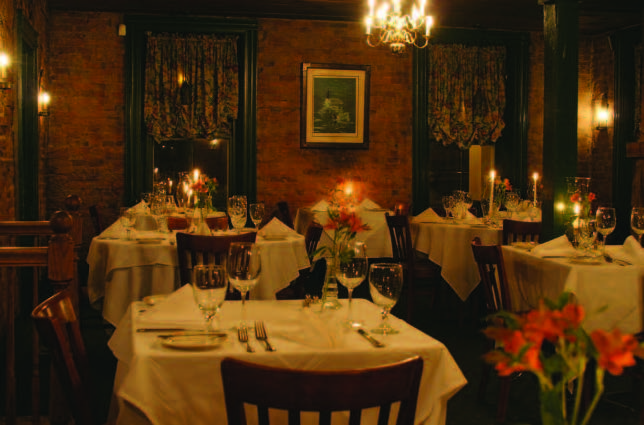
Frenchtown Inn
Okay, so perhaps I do have my preferences. We all do. After almost 25 years of reviewing restaurants in New Jersey, I could list in a nanosecond the restaurants I’d avoid if asked for my personal choices for a romantic dinner. I don’t like pomp, I don’t like pretense and I really, really don’t like anything that smacks of imitation. Sincerity is the surest shot to lassoing my heart. I love restaurants helmed by chefs who cook with passion and skill, who offer a strong voice in food. Kind of the way Steve Tyrell plays the piano and sings.
If you do a little research, ask a few questions, I suspect you’ll find that the person to whom you want to give an evening of romance has preferences of his or her own. Maybe even a private list of restaurants that sing “Isn’t It Romantic?” So ask. Just ask.
But if your partner in romantic dining isn’t much of a planner, a researcher or doesn’t have an inquisitive mind, I’d like to pass on a handful of restaurant recommendations to keep in mind should the object of your affections ask where you’d like to spend a romantic evening. These are classics, to be sure. Restaurants, in most cases, that have served the Garden State for years. They are reflective of place, have stood fast to their missions in the face of changing times, even changes of chefs. Some make bold culinary statements, some have stolen my heart in subtle ways.
Whether they strike a chord with you, or simply start you thinking about your own preferences, I hope you snag an evening (or three) this season devoted to a romantic dinner….

- On the Delaware River is the Frenchtown Inn, where the food and the setting duke it out for top honors. Let’s call it a perennial draw. Nothing there has ever been over the top, chi-chi or trendy. Today, with chef-owner Andrew Tomko in the kitchen, the last stop in Frenchtown before crossing the bridge to Pennsylvania is one of my first recommendations when folks inquire about a special restaurant for a special night out. Drive around the western Hunterdon County countryside, stop at some antiques shops, art galleries and studios, then end up at this inn. Confession? A few decades ago, I lived across the street, in the old Gem Theater building. (Yes, I remember when the serene Frenchtown Inn was a rowdy townie bar called the Warford House.) So the Frenchtown Inn is a sentimental favorite. Romance often comes with a dash of sentimentality.
- I remember so many top-drawer dinners at The Bernards Inn, in Bernardsville. I remember sitting out on the porch, talking with the wine importer Bobby Kacher about his excursions around the south of France; a tete-a-tete with a soul mate as we talked politics in scary times and scary places; a spirited dinner with a food-centric pal who’d taken the train from New York City because he wanted an evening in the kind of place they just don’t grow where he lives. The Bernards Inn long has been a commanding presence in New Jersey dining, but never more than since chef Corey W. Heyer took charge of the kitchen. His technical precision serves his creativity well, and the elegant setting is about old-school understatement, not flamboyance.
- Well, there is a certain flamboyance about Rat’s, the upscale restaurant set amid the world-class Grounds for Sculpture in Hamilton. Art, art is everywhere, in the various dining spaces that are all about bounty, in the rooms that welcome, in the
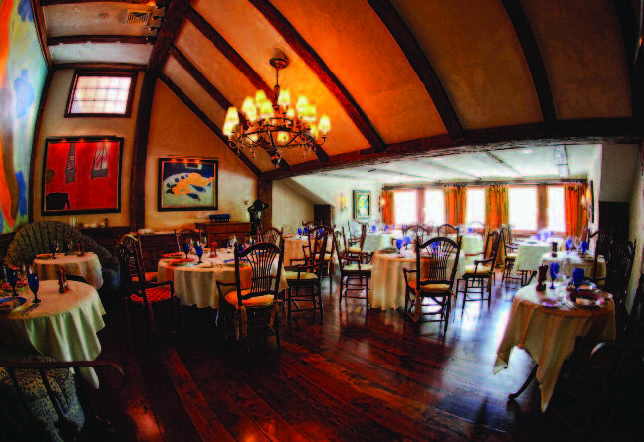 restrooms that don’t give the senses a break. That’s all deliberate, the brainchild of Seward Johnson, who, the year it opened, gave me a personal tour of Rat’s and the atelier he installed in the compound when I was on assignment for Town & Country magazine. Johnson was forward-thinking, connecting Rat’s (named after a loyal and hospitable character in the book The Wind in the Willows) to a farm at its birth, urging diners to tour the sculpture grounds before or after their meal, determined to make dinner an all-inclusive creative experience. The mission and the restaurant, reinforced today by the wide-ranging talents of chef Shane Cash in the kitch and the management of Philadelphia-based restaurateur Stephan Starr, never fail to warm my heart.
restrooms that don’t give the senses a break. That’s all deliberate, the brainchild of Seward Johnson, who, the year it opened, gave me a personal tour of Rat’s and the atelier he installed in the compound when I was on assignment for Town & Country magazine. Johnson was forward-thinking, connecting Rat’s (named after a loyal and hospitable character in the book The Wind in the Willows) to a farm at its birth, urging diners to tour the sculpture grounds before or after their meal, determined to make dinner an all-inclusive creative experience. The mission and the restaurant, reinforced today by the wide-ranging talents of chef Shane Cash in the kitch and the management of Philadelphia-based restaurateur Stephan Starr, never fail to warm my heart.
Small, intimate, reminiscent of a locally loved French bistro, A Toute Heure in Cranford is my idea of a restaurant expertly and exquisitely conceived and realized. Many have tried similar concepts, but few have hit the mark as well as the ownership team of Andrea and Jim Carbine and executive chef Kara Decker, the prime forces behind the sweet little spot that has earned its statewide reputation for purely delicious food. Sure, A Toute Heure can be seen as a tad cramped. (I see it as comfortably cozy.) There’s no liquor license, so it’s BYOB.(That’s happiness for a wine geek like me, who always has bottles at the ready for the seasonally satisfying plates this conscientious kitchen serves forth.) Spontaneous dining simply can’t be expected on weekends—or, I so often hear—even on weeknights since the place books out. (I like looking forward to a special night out, so reserving a month ahead is fine for me.) This bistro is beloved.
The first time I ate at Makeda, the Ethiopian restaurant in New Brunswick, was back in its early days, when it was located in a smaller space and the dining was joyfully cheek-to-jowl. It’s long settled in its larger digs in the college town and its imprint on the community is profound: A dear pal who teaches at Rutgers tells me that it’s not only where she takes all out-of-town guests and celebrates birthdays and anniversaries, but the cuisine has influenced her home-cooking. “Makeda transports me every time I eat here,” this professor says. “It’s a vacation in a couple of hours.” I agree, and that’s why this downtown destination owned by Peter Meme and Stuart Smith, with peerless chef Aster Kassa, is always on my go-to list. Sometimes romance is less about where you are, physically, and more about where a restaurant’s food and attitude can take you, spiritually. When at Makeda, I get away in the best possible way.
Makeda, the Ethiopian restaurant in New Brunswick, was back in its early days, when it was located in a smaller space and the dining was joyfully cheek-to-jowl. It’s long settled in its larger digs in the college town and its imprint on the community is profound: A dear pal who teaches at Rutgers tells me that it’s not only where she takes all out-of-town guests and celebrates birthdays and anniversaries, but the cuisine has influenced her home-cooking. “Makeda transports me every time I eat here,” this professor says. “It’s a vacation in a couple of hours.” I agree, and that’s why this downtown destination owned by Peter Meme and Stuart Smith, with peerless chef Aster Kassa, is always on my go-to list. Sometimes romance is less about where you are, physically, and more about where a restaurant’s food and attitude can take you, spiritually. When at Makeda, I get away in the best possible way.
All this said, I can take a walk on the beach at Barneget Light, swipe the sand off my arms and legs, then canter over to Mustache Bill’s Diner for a plate of chef/owner Bill Smith’s fried flounder (extra tartar sauce, please) and feel like hugging the world. Pop Steve Tyrell in the CD player on the ride home, and the recipe for romance is complete.
Reservations Recommended…
Frenchtown Inn
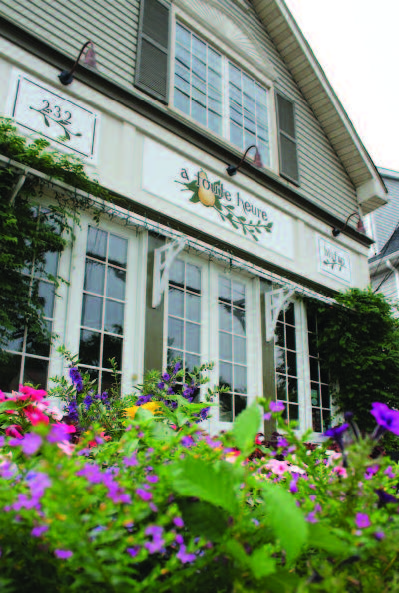
7 Bridge St., Frenchtown • 908.996.3300
The Bernards Inn
27 Mine Brook Road, Bernardsville • 908.766.0002
Rat’s
16 Fairgrounds Road, Hamilton • 609.584.7800
A Toute Heure
232 Centennial Ave., Cranford • 908.276.6600
Makeda
338 George St., New Brunswick • 732.545.5115
It is possible to have a great first date.

Photocredit: iStockphoto/Thinkstock
There are scores of articles, blogs, and web sites about horrendous first dates. Yet not that much has been written about the fantastic ones. Is it a case of not wanting to jinx a budding relationship? Perhaps one needs a little distance from that initial link-up to gain some perspective. Or maybe the train wrecks are just more interesting to read and write about. The fact of the matter is that, whether you’re 16 or 60 or somewhere in between, it is possible to have a great first date…if you follow a few simple rules and embrace the experience.
For most people, “the goal of a first date is to get to a second date,” says Julianne Cantarella, dating coach and owner of New Jersey’s Matchmaker. “For many people, however, obstacles such as anxiety and high expectations can get in the way.”
Cantarella’s advice is to keep it simple and have fun. When she matches people up through her company, for instance, she usually arranges a lunch as a first date. Dinner, she explains, can be uncomfortable for people just getting to know each other—and expectations are usually higher. “Plus, if you’re not hitting it off, you are stuck with each other for a couple of hours. It’s always a good idea to at least have an enjoyable activity to help pass the time, just in case.”
She does not recommend movies or concerts for a first date, however: “The first date is an opportunity to get to know someone…to do that, you need to converse with one another, and you can’t do that at a movie or concert. Save those for subsequent dates.”
GREAT OUTDOORS
If the weather cooperates, a great idea for a first date is exploring one of the many gorgeous state parks in New Jersey, such as Island Beach State Park (great for bike riding), Hacklebarney (for hiking), or Liberty State Park (hop on a ferry and visit the Statue of Liberty or Ellis Island.) A complete listing can be found on the state web site. There are also hundreds of wonderful community and county parks where you can bring a picnic lunch, such as Grover Cleveland Park in Caldwell, Brookdale Park, which lies within the municipalities of Montclair and Bloomfield, or Verona Park, which offers seasonal paddleboat rides and light fare in its quaint stone Boathouse restaurant.
Participating in a sporting event you both enjoy is also an excellent idea. My first date with my husband, Tom, was the Giralda Farms 10K race in Madison. We had lunch at a diner afterward and that was the beginning of our romantic relationship. Both of us are runners. We met through the Essex Running Club and had been friends for about a year before he asked me out on a “formal” date. I figured if he could fall in love with me all sweaty in running clothes after a race, he was the one.

Photocredit: iStockphoto/Thinkstock
POINTS OF INTEREST
If your interests run more toward history or art, there are many places in the Garden State that are ideal for a first date. Mark Luzzi, 55, massage therapist and former resident of Caldwell, suggests Grover Cleveland’s Birthplace in Caldwell. It is the only house museum dedicated to the 22nd and 24th U.S. President, Grover Cleveland. A bachelor when he entered the White House, Cleveland got married at the age of 49 to Frances Folsom, 21, the youngest First Lady in history. Visitors can partake of parlor games and try on period costumes—but call first for site hours. It’s a short tour, so you can follow it up with coffee and pastries at Calandra’s Italian Village, which is nearby.
Luzzi also recommends the Stickley Museum at Craftsman Farms in Morristown, Gustav Stickley’s early 20th century country estate, a National Historic Landmark that will transport you back to 1911. “I love Stickley’s furniture but cannot afford it, so this is the next best thing,” he says.
If you both are fond of nature and photography, investigate Hackensack Riverkeeper Eco-Tours. They run from May 4 through October 13. The Eco-Cruises are educational tours of the Hackensack River and the NJ Meadowlands aboard the Hackensack Riverkeeper’s specially rigged pontoon boats. Captain Bill Sheehan started the Eco-Cruise program in 1994 to increase awareness of the lower Hackensack River watershed as a vital natural and recreational resource. The tours generally take between two and two-and-a half hours and are fully narrated by a U.S. Coast Guard-licensed captain.
 TAKING IT TO THE NEXT LEVEL
TAKING IT TO THE NEXT LEVEL
For first dates with someone you’ve known for a while—and whom you want to impress—then cocktails and dinner are a good bet. Pat Amato, 23, a certified personal trainer in Roseland, recommends Halcyon Brasserie, a popular spot in Montclair for special dates (first and otherwise). “The décor is beautiful, and before dinner you can relax at the main bar or lounge,” he says. The menu is eclectic, with selections ranging from Organic Scotch Eggs to Kimchi Fried Chicken to Orange Ginger Glazed New Zealand King Salmon.
Jenn Schiffer, 28, a web site developer from Montclair, recommends Pig & Prince as a “nice, fancy place with great cocktails and appetizers.” She also counts Uncle Moustache—which serves French-Lebanese fare—and Tuptim, a Thai restaurant, among her favorite not-too-noisy places to enjoy good first-date conversations.
Another way to make a great impression is to take your date to High Societea House in Wayne—described on its web site as a “tea room where one can go back in time and enjoy the lost art of conversation, while enjoying the perfect pot of tea!” Catherine Close, a graphic designer in her 50s from Little Falls, had her first date there with her now-husband, Mick. “It’s a lovely ambience,” she says, “with the floral tea cup settings, serving pieces and lace tablecloths. A relaxed and romantic atmosphere.”

Photocredit: iStockphoto/Thinkstock
To complement your tea, there are scrumptious caramel and assorted fruit scones with freshly made lemon curd and clotted cream, homemade soups, salads, finger sandwiches, tea breads, muffins, and assorted desserts. Reservations are encouraged since there are a limited number of tables.
The bottom line is that first dates don’t have to reduce you to a bundle of raw nerves. A little planning, the right attitude, and being open to having fun and living in the moment can go a long way.
When two people tie the knot, they never know for sure what’s over the horizon. Unfortunately, the outcome of many unions is not always “happily ever after.” As Vikki Ziegler knows all too well, sometimes love turns to hate. Her Livingston, NJ practice (Ziegler & Zemsky) focuses on divorce and mediation—a process designed to save time, money and anguish, and help couples to split and quickly move on. Ziegler’s reputation for finding the middle ground has made her a familiar face to countless millions of television viewers. She is a frequent contributor to network and cable news shows, has authored books and magazine articles about her craft, and founded the web site divorcedating.com. This summer, Ziegler begins work on a reality series for Bravo, which promises to boost her public profile even higher. As EDGE editor Mark Stewart discovered, there’s more to being a divorce mediator than divvying-up assets. Ziegler wears many hats. And sometimes she must change them in the blink of an eye.
EDGE: There are three ways to go in a divorce, is that correct?
Vikki Ziegler: Yes. If you go to court, a judge decides the outcome.
In arbitration, a retired judge or practicing attorney is hired, and lawyers control the discussion. A mediator assists in explaining the law and guiding couples to a resolution.
EDGE: Is part of what you do opening their eyes to how a judge is likely to rule?
VZ: That’s a crucial part. My goal is to show why it’s good to compromise on certain issues. It’s a tough-love process that requires patience and a skillful articulation of the law.
EDGE: If mediation is successful, it’s a win-win financially.
VZ: It is. You only pay the mediator, and can save the exorbitant fees associated with hiring two attorneys. Litigation is the most expensive and least effective method to handle a divorce, in my opinion. You have no control over the outcome, spend a great deal of money during the process, and are generally angry over the results.
EDGE: How does a couple pick a mediator?
VZ: Background. Experience. Referrals. Cost. Sometimes there is a preference for a man or woman. Most couples choose a family law mediator to help them through their divorce. They’re the most seasoned and know the law with specificity. A good mediator advocates for both sides, but also molds the resolution in a compromised fashion. I think of it as taking ingredients from both parties and creating a soup that they both enjoy—even if one is a health-nut and the other one a pizza-lover. I have a sense of how cases should settle, based on how a judge might rule, and on my knowledge of case law. I apply the facts surrounding a mediation and help drill down on the key issues in order to resolve them quickly and reasonably.
EDGE: What is the typical number of meetings it takes to resolve a divorce mediation?
VZ: I have settled cases in one session when a couple wants to get divorced and be open-minded. But I’d say two to five, depending on the complexity of the case. I have a large mediation now and we are on our eighth meeting. However, the parties are saving hundreds of thousands of dollars by mediating versus litigating.

EDGE: Is a good mediation one where both sides give in?
VZ: Yes. I always say a good deal is when both parties are unhappy. Nobody loses. Nobody wins. They have both sculpted a deal that is fair—one they can live with and live by.
EDGE: If the people can’t stand each other, mediation still works if they can each talk to the mediator. Is this a skill that you feel defines you in your field?
VZ: I think so. I act as the neutral third party, helping two people come closer to seeing eye-to-eye on the division of their assets. Sometimes the parties only respond to me, and not each other, which is fine. It keeps the acrimony low.
EDGE: Describe a couple that simply does not belong in mediation.
VZ: One that wants to fight. One that wants to argue about non-issues and small things. One that wants to inflict emotional and financial pain. In mediation, both parties must be ready to listen, be open-minded, let go of anger and look to the future. If they don’t have some of those qualities walking through my door, they’ll be battling it out in divorce court for a long time.
EDGE: When you sit down with a couple, obviously you want to make a quick evaluation of them to determine your strategy. How good are you at “reading the room” that first time, and what are some of the things you look for that tell you it’s going to be a hard mediation or an easy one?
VZ: At first glance, when I meet a couple, I can tell if they want to fight or want to move on. After practicing for 14-plus years, I am pretty good at determining whether or not I can help the parties, usually within a few minutes. I listen to the way they speak and observe whether they are looking at each other or not. I take note of who is screaming and yelling, how reasonable their positions are, how they sit in their chairs, and whether they are making eye contact with me.
EDGE: How important is it in that first meeting to help people separate their anger or hurt or confusion over a failed marriage from the process of mediation? You almost have to play therapist in that respect, right?
VZ: I do wear two separate hats. The first is to explain that the courts don’t care about what went wrong in their marriage; it’s about dividing assets. I ask people to do their best to shelve their emotions during the process and to look at the case as if it were a business deal. Of course, that’s very difficult when love turns to hate. I have to drive home the idea that holding on to ill feelings will not help promote settlement or assist them in moving on to the next chapter in their lives.
EDGE: Mediators can give legal information but not legal advice. So if you see someone being completely toxic or lying about money and assets, how do you handle that?
VZ: I usually caucus—separate the parties and counsel, if they have representation present—and explain to the bullying client that he or she will not win in my office by behaving in a forceful manner. If a litigant lies, well, mediation cannot work. It must be an open and honest process; all the cards must be on the table. Mediation is supposed to be an environment where both parties are on a level playing field and have the mindset to resolve their entire case globally. The mediator takes the litigants’ words at face value. There is no oath taken—it is an informal process where both parties must be up-front about all of their income and assets for the mediation to be successful.
EDGE: You’ve been making television appearances for seven years now, on both news and entertainment shows. Is the Bravo series the first one that’s come to you?
VZ: No. I’ve mulled over other offers in the past, but they were not the right fit. This opportunity is a perfect match for me, the couples and the viewers. I’d shied away with my personal life being on the air, but it is part of the storytelling. I understand there is a recipe for success in TV—viewers need to understand what makes you tick, what makes you love what you do, what makes you successful at what you do—and that means granting access. In this series, it will be 10 percent personal life and 90 percent my professional life. As much as possible, the focus will be on the couples.
EDGE: Even so, there is always that aspect of being at the mercy of the editing room.
VZ: That is always a challenge. I always have to protect my integrity and my reputation. But working with professionals makes my life much easier.
EDGE: So why stick your neck out?
VZ: This series will educate a huge, mass audience on how to get divorced in an intelligent and less-emotional way. I love television. I enjoy being on the air, and I think it comes naturally to me. And helping people is who I am and what I’m all about. It’s the perfect marriage for me. No pun intended.
Editor’s Note: Vikki Ziegler Payne is a founding partner at the Livingston firm of Ziegler & Zemsky LLC. After graduating from the University of Rhode Island and the Quinnipiac College School of Law, she returned to her home state of New Jersey to clerk for judge Michael Diamond in the Family Division of the Superior Court in Passaic County. While under his tutelage, Ziegler began honing her skills as a mediator. To date, she has settled 99 percent of her cases. Ziegler authored Your Pre-Marital Survival Guide and The Pre-Marital Planner. Her official web site is vikkiziegler.com.

